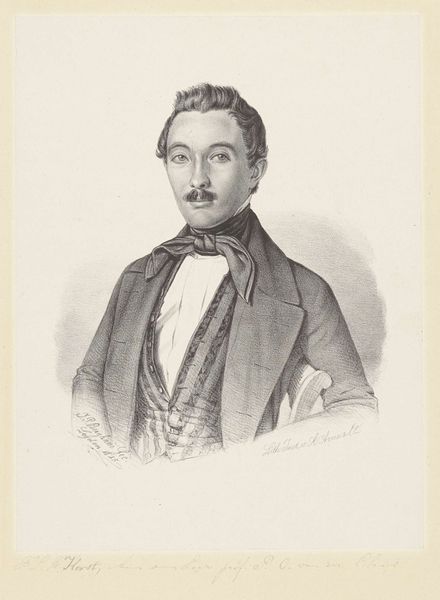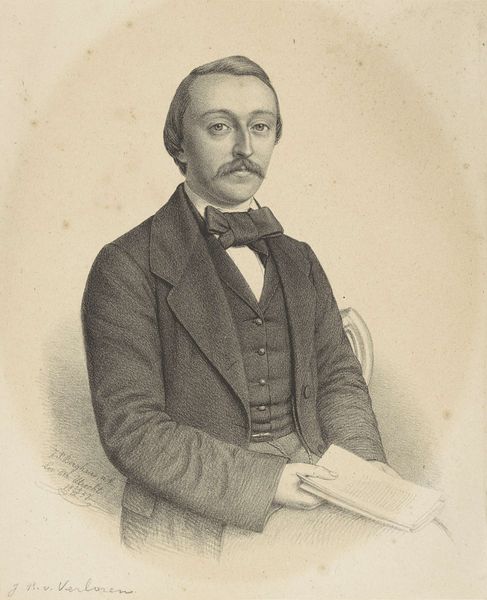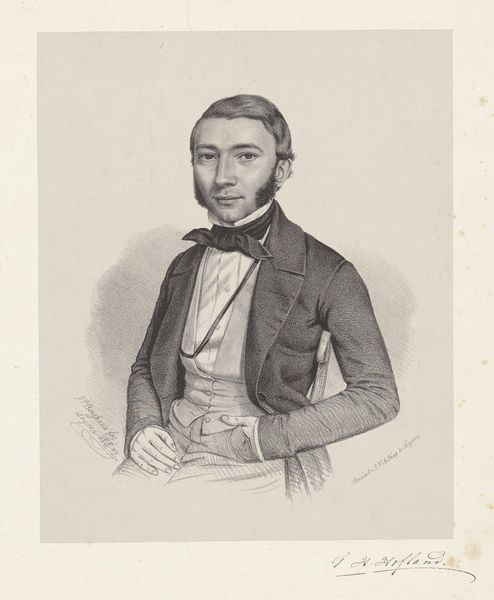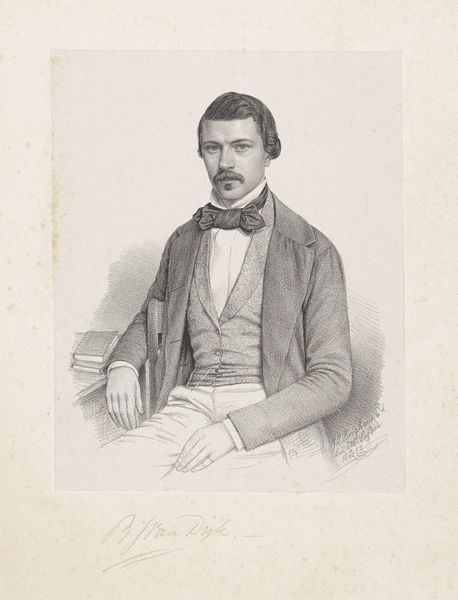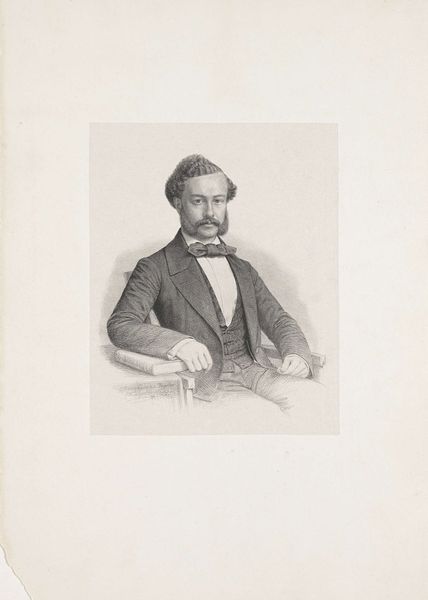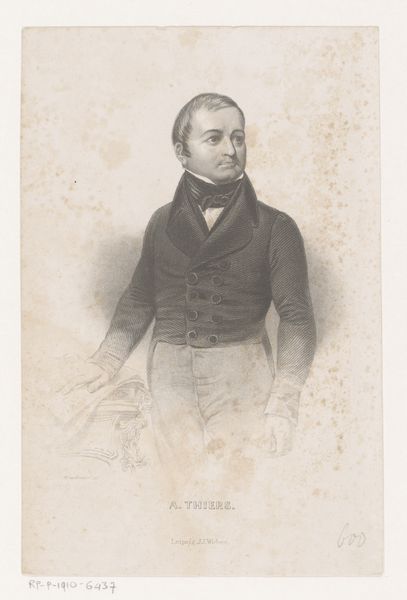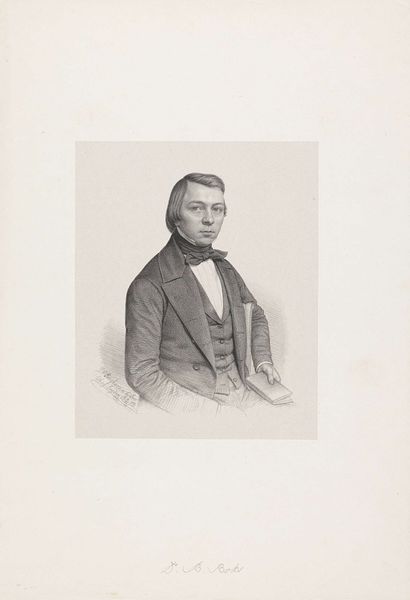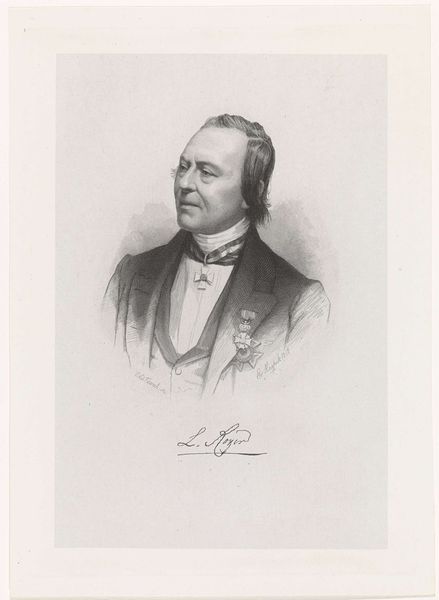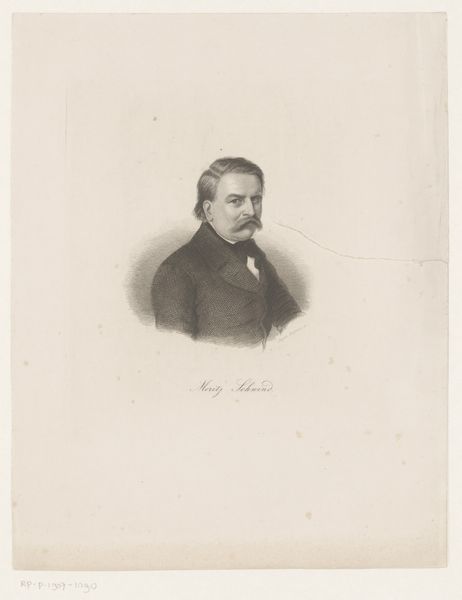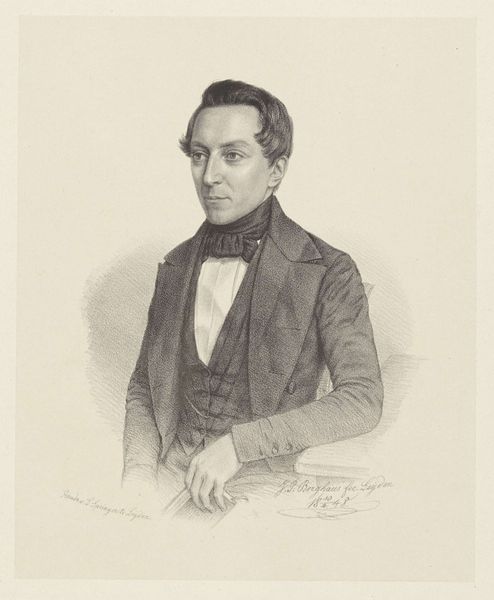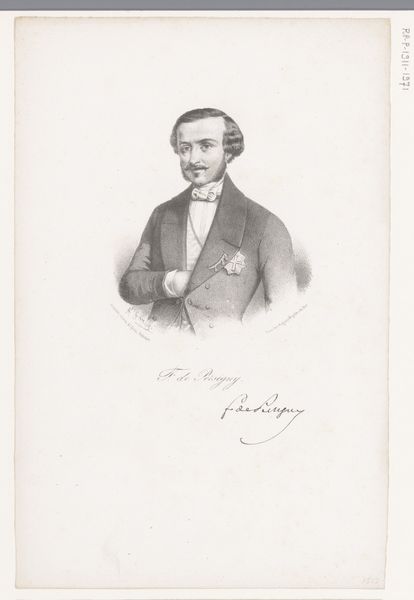
drawing, pencil
#
pencil drawn
#
drawing
#
pencil sketch
#
caricature
#
pencil drawing
#
pencil
#
portrait drawing
#
academic-art
#
realism
Dimensions: height 339 mm, width 255 mm
Copyright: Rijks Museum: Open Domain
Curator: Johann Peter Berghaus’s portrait of G. Denys van Groll, likely made around 1850, presents a finely detailed pencil drawing of a distinguished gentleman. It resides here at the Rijksmuseum. I find myself immediately struck by the sitter's serene expression, almost as if he were entirely self-aware but supremely indifferent to external judgment. Editor: The precision of the lines really draws attention to the texture of his clothing and the subtle rendering of light and shadow across his face. We can appreciate, on one level, that the means of representing van Groll communicates something of his status as a building inspector for the Dutch East Indies. Consider the labor invested in a drawing like this, meant for the eyes of specific communities of practice and admiration. Curator: It’s interesting that you mention labor because this work presents itself with such ease and naturalism, wouldn’t you agree? The technique allows for capturing the sitter's likeness in a relatively direct and accessible manner. And, although his name isn’t one that's really known today, the portrait does leave me with a sense of lingering privilege from the bygone colonial era. Editor: But it isn’t a painting or a sculpture that claims grand pronouncements about empire and governance. Instead, we’re invited to think about the role this particular type of reproductive technology—the drawing—plays in solidifying specific ideas about white European masculinity in this time. Think of the performance involved on behalf of the sitter, as well. Who has the leisure to sit for such a meticulous portrait? The drawing thus signifies class in its material composition and cultural accessibility. Curator: Very true, although I'm also inclined to believe that Berghaus likely employed his skill to portray Van Groll with a genuine interest in his individual character. The detailing doesn't feel overly embellished, but instead carefully observed. Editor: I understand that perspective. But let's also remember this was a society structured by sharp divisions, which this portrait unavoidably reflects, despite the skill on display and the care you cite. And let's recall, too, the economic foundations that permitted the leisure required for this encounter between artist and subject in the first place. Curator: Your perspective really underscores the deeper historical contexts at play. The materiality of a drawing can be easily overlooked. Editor: Exactly. Seeing beyond the sitter’s face towards the wider political landscape requires thinking critically about not just representation but also artistic production and its ties to labor exploitation.
Comments
No comments
Be the first to comment and join the conversation on the ultimate creative platform.
